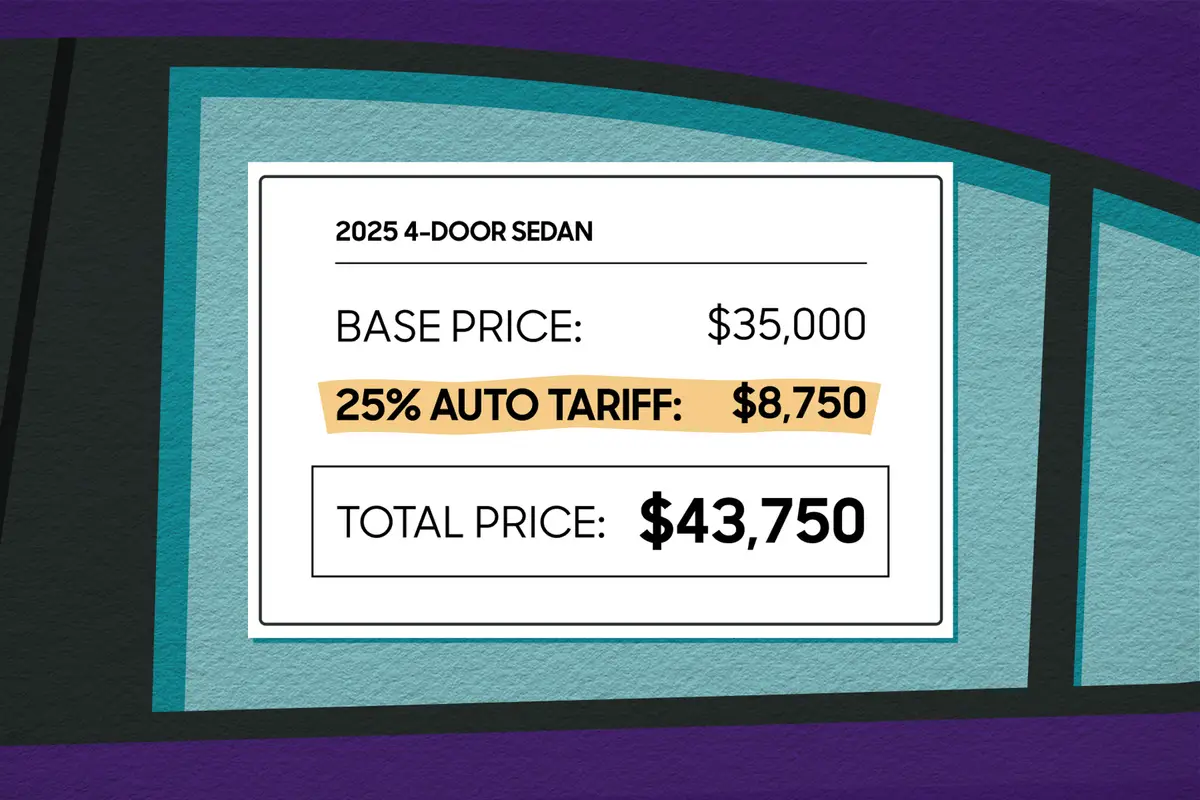Our view: 2010 Mazda Mazda5

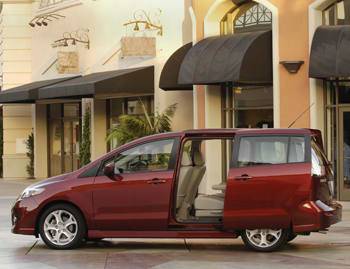
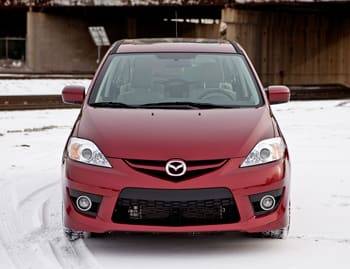
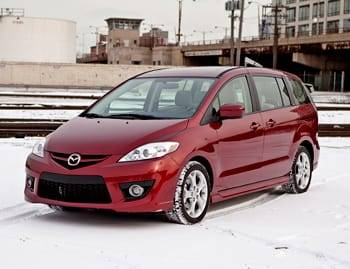
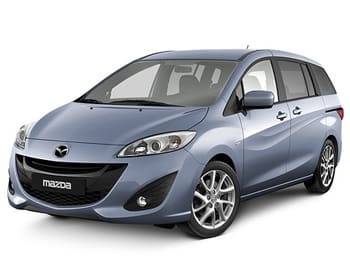
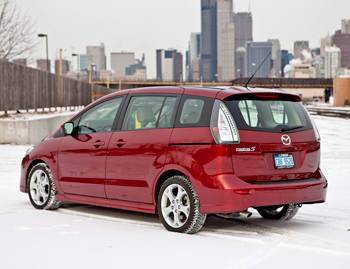
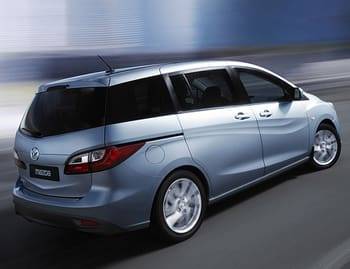
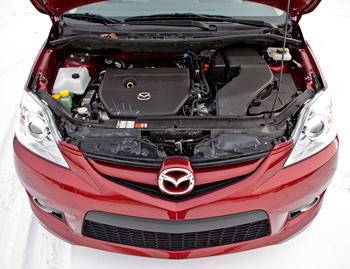

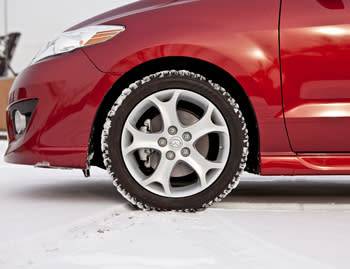

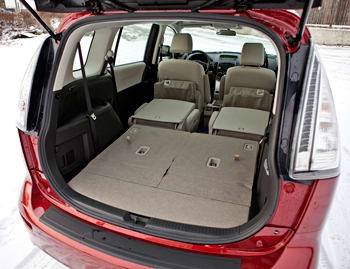
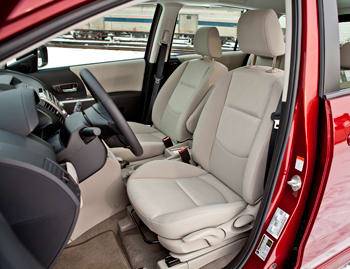
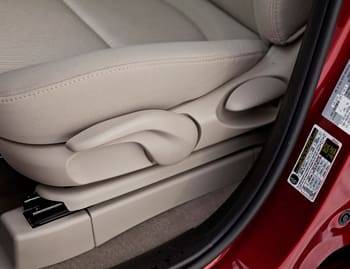
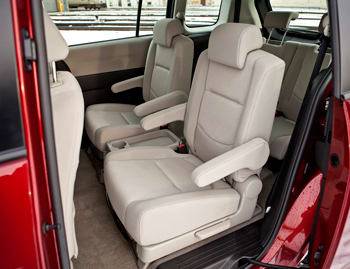
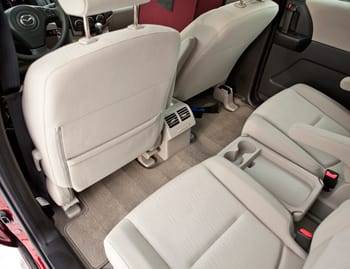
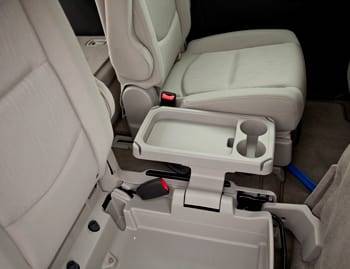
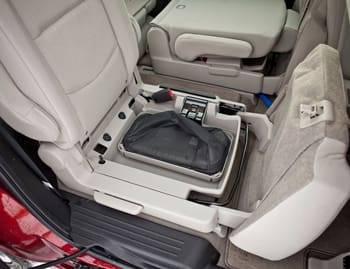
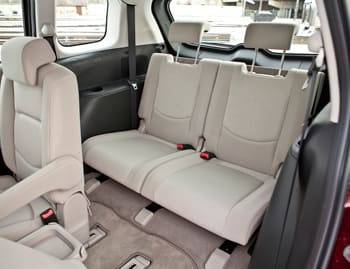
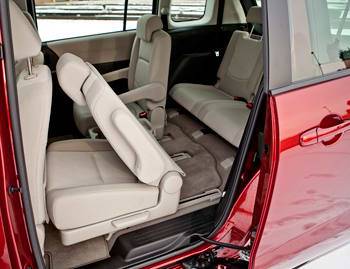
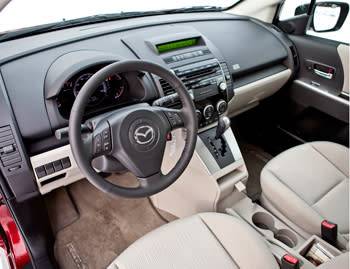
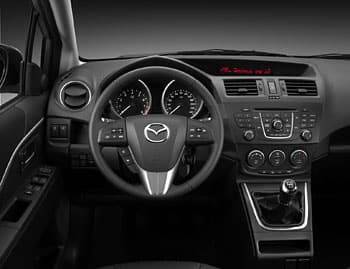
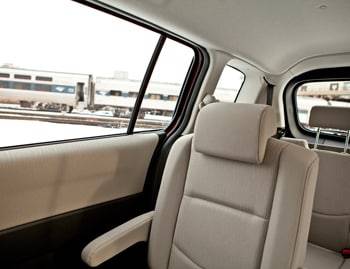
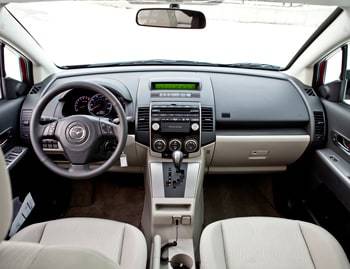
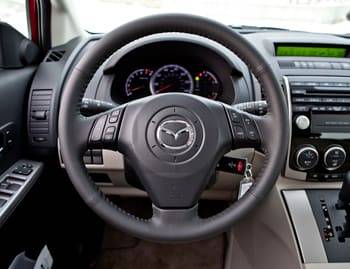
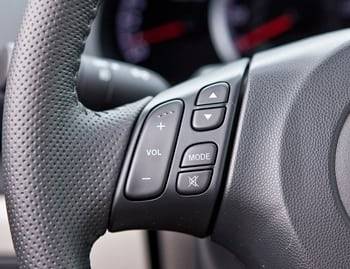
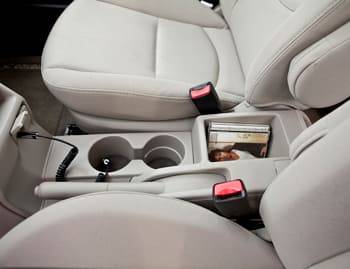
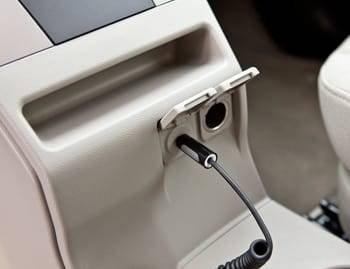
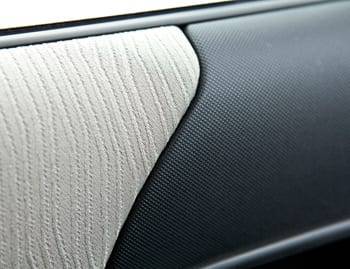
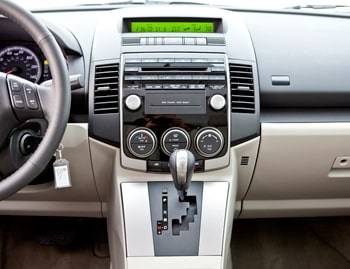





























The small-minivan idea is a good one, yet most minivan models have either grown or — in the case of Mazda’s MPV — disappeared. Complete with three rows of two seats each and the genre-defining sliding side doors, the Mazda5 is arguably the only small van on the market — a microvan. It’s so much smaller than others in its segment that comparing it with minivans is pointless. It’s closer in size — inside and out — to compact crossovers, but its closest competitor is the Kia Rondo, which has a similar layout and an optional third-row seat, but four conventional hinged side doors.
On its own merits, the Mazda5 is pleasant enough to drive and live with, and its starting price and cargo space are impressive. It’s when you compare its passenger space with that of the Rondo and small SUVs that you wonder if its benefits extend beyond the sliding doors.
The Mazda Mazda5 comes in three trim levels: Sport, Touring and Grand Touring. Our test car was a Touring equipped with a rear bumper guard and satellite radio as its only options. Click here to see changes from the 2009 model year.
Exterior & Styling
The sliding doors say “minivan,” but many see the Mazda5 as a wagon. Minivans tend not to set hearts aflutter, but there’s one thing I appreciate about the 2010 Mazda5, and that’s its styling. It’s nothing special, but it’s also not the redesigned 2011 Mazda5 that’s due at dealerships early in 2011; Mazda has already released photos (click on the thumbnails to the right). The 2011 has a less restrained design, including the smiling grille most new Mazda models get, plus a new characteristic: wavelike accent lines in the bodyside sheet metal. On the upside, the 2011 lowers the taillights and eliminates the clear-lens-over-chrome style, which is outdated at best.
Competing for Space
The interior is well-engineered and well-executed, but there’s no avoiding the fact that there are six seats in a relatively small space. This isn’t uncommon, but many models sacrifice space in just the rear seats, while the Mazda5 distributes legroom more evenly. As the table farther down this page reflects, the Mazda Mazda5 has less front-seat legroom than the Rondo and a few compact crossovers. The Mazda5’s dimensions seem only slightly smaller — 1.1 inches at most compared with seven-seat versions of the Rondo and Toyota RAV4 — but at 6 feet tall I felt more crowded behind the wheel than the specifications suggest.
Lowering the driver’s seat also moves it rearward, but I preferred to ride higher to improve forward visibility. (The A-pillars extend pretty far forward, and it’s hard to tell where the car’s nose ends.) I’m not suggesting I was crowded to an unsafe degree, but it was tight enough that I personally wouldn’t invest in a Mazda5. It’s a shame, because letting the front seat move a bit farther back would open up the model to more buyers.
Second & Third Rows
The second row is pretty easy to get into, and the seats slide forward and back independent of each other. With these seats in their rearmost position, my knees didn’t touch the driver’s backrest, but that’s partly because the rear seats are pretty low to the floor, which raises the knees. Even so, I was pretty comfortable; the second-row backrests recline a generous amount, which helps. Some riders found the cushions slightly too firm.
At the pull of a single lever, the seatbacks tilt and the whole seat slides forward to ease third-row entry. As is typical, the third row has the least space. Though headroom is decent, legroom is unworkable for someone my size. There’s practically no foot room — let alone legroom — unless you move the second row forward farther than any passenger would want. It makes more sense to put the smallest people in back, of course.
The sliding second row is critical to fitting more than four people in the Mazda5, because all legroom is shared. Actually getting that many in the car will depend on passenger size and placement, and it’s best not to approach it casually. If you don’t hold a strategy session ahead of time, it just won’t work.
There’s a lot that’s good about the Mazda5’s seating situation, including swing-down inboard and outboard armrests for each of the front and second-row seats, plus user-friendly sliding and folding mechanisms. The seat fabric is nice, too. There are modestly sized storage compartments under the cushions of both second-row seats. One of them can accommodate the center tray, which provides two cupholders and a storage net if you like, or stow it to provide a narrow aisle between the seats; just flip it 180 degrees then drop the seat cushion back down.
When you boil it down to passengers and space, unless you’re carrying six people, the Mazda5 might not have an advantage over a five-seat crossover. It depends on whether you’d rather have three backseat passengers sitting abreast, or have two in the Mazda5’s middle seat and one in the third row — with whatever legroom he or she can muster.
Cargo
Fold all the passenger seats down, and the Mazda5 has a clear advantage over competitors, with 89.3 cubic feet of cargo volume. The seven-seat Rondo and RAV4 have 73.6 cubic feet and 73.0 cubic feet, respectively. The Hyundai Tucson and Subaru Forester have 55.8 and 68.3 cubic feet with their backseats folded. The Mazda5 also beats these models when it comes to cargo room behind the second-row seat, with 44.4 cubic feet.
Easy-to-fold third-row seats and a boxy shape make the cargo area useful, even for tall items, and our car’s optional bumper guard — a black scuff plate — eased concerns about damaging the body-colored bumper. Though it’s manual, the liftgate has a feature that’s been showing up in powered versions: the ability to limit how high the gate raises. The point is to keep from banging it on a low ceiling or garage door. The Mazda5’s liftgate raises roughly to roof level; if you want it higher, just push it up another 3 inches. One gripe about the cargo area is that it’s too dark; it needs a dome light rather than a single side-panel one, which is both dim and easily blocked by cargo.
| Mazda5 vs. Kia Rondo and Compact Crossovers | |||||||||||||||||||||||||||||||||||||||||||||||||||||||||||
|---|---|---|---|---|---|---|---|---|---|---|---|---|---|---|---|---|---|---|---|---|---|---|---|---|---|---|---|---|---|---|---|---|---|---|---|---|---|---|---|---|---|---|---|---|---|---|---|---|---|---|---|---|---|---|---|---|---|---|---|
| 2010 Mazda5 | 2009 Kia Rondo (seven-seat model) | 2010 Toyota RAV4 (seven-seat model) | 2010 Hyundai Tucson | 2010 Subaru Forester | |||||||||||||||||||||||||||||||||||||||||||||||||||||||
| Seats | 6 | 7 (5 standard) | 7 (5 standard) | 5 | 5 | ||||||||||||||||||||||||||||||||||||||||||||||||||||||
| Base MSRP | $17,995 | $19,145* | $22,735* | $18,995 | $20,295 | ||||||||||||||||||||||||||||||||||||||||||||||||||||||
| Length (in.) | 181.5 | 179.0 | 181.9 | 173.2 | 179.5 | ||||||||||||||||||||||||||||||||||||||||||||||||||||||
| Width (in.) | 69.0 | 71.7 | 71.5 | 71.7 | 70.1 | ||||||||||||||||||||||||||||||||||||||||||||||||||||||
| Wheelbase (in.) | 108.3 | 106.3 | 104.7 | 103.9 | 103.0 | ||||||||||||||||||||||||||||||||||||||||||||||||||||||
| Turning diameter (ft.) | 34.8 | 35.4 | 34.8 | 34.6 | 34.4 | ||||||||||||||||||||||||||||||||||||||||||||||||||||||
| Cargo volume (behind third/second/first row, cu. ft.) | 11.7 / 44.4 / 89.3 |
6.5 / 31.7 / 73.6 |
12.3 / 37.2 / 73.0 |
— / 25.7 / 55.8 |
— / 33.5 / 68.3 |
||||||||||||||||||||||||||||||||||||||||||||||||||||||
| Headroom (first /second / third row, in.) | 40.7 / 39.4 / 37.1 |
41.6 / 40.2 / 35.1 |
40.8 / 39.7 / 37.2 |
39.4 / 39.1 / — |
41.6 / 40.4 / — |
||||||||||||||||||||||||||||||||||||||||||||||||||||||
| Legroom (first / second /third row, in.) | 40.7 / 35.2 / 30.7 |
41.3 / 38.2 / 31.3 |
41.8 / 38.3 / 30.0 |
41.2 / 38.7 / — |
43.1 / 38.0 / — |
||||||||||||||||||||||||||||||||||||||||||||||||||||||
| EPA mpg (city/highway) | 22/28** | 20/27 | 22/28 | 22/30 | 20/27** | ||||||||||||||||||||||||||||||||||||||||||||||||||||||
| *Price adjusted to add optional third-row seat. **Manual transmission; with automatic, Mazda5 gets 21/27 mpg, Forester gets 20/26. Source: Manufacturers, EPA |
|||||||||||||||||||||||||||||||||||||||||||||||||||||||||||
The Drive
The Mazda5’s 2.3-liter four-cylinder has to rev pretty high to get the car moving quickly. Our car had the optional five-speed automatic transmission, which adds $1,440. The five-speed manual might eke a little more acceleration out of the engine, but you’ll need to work that stick. The automatic, likewise, has to shift to lower gears to hit the necessary revs. With four adults aboard, plus the driver (insert wisecrack here), the engine had to work harder — and audibly so — though it’s reasonably smooth. I felt the weight in diminished acceleration, but I didn’t consider it a problem. I’m not quick to call any vehicle underpowered, but some people (and most car reviewers) would deem the Mazda5 as such. Throw in some hillier terrain, though, and I suspect I’d agree. Front-wheel drive is the only choice.
Mazdas are known for being sporty, and if a car can be sporty without being quick, the Mazda Mazda5 is, in some regards. Compared with minivans, it’s no contest, because its small size and relatively short wheelbase make the Mazda easier to fling about. It also rides lower than the average crossover, creating a more grounded feel. Unfortunately, I can’t judge the roadholding very well, because our car had winter tires well before the arrival of the cold temperatures for which they’re needed. The result was squirmier handling.
Ride quality is also pretty good. Even though the wheelbase is shorter than a large van’s, it’s longer than the average compact crossover’s, which helps with smoothness. Either by design or default, small crossovers ride more firmly. Wheelbase be damned, the turning circle is competitive at 34.8 feet.
Safety
The Mazda5 hasn’t been crash-tested by the Insurance Institute for Highway Safety. Its standard safety features include seat-mounted side-impact airbags for the front seats, plus side curtain airbags that cover the side windows for all three seat rows in the event of a side impact. The Mazda5 has antilock brakes with discs at all four wheels. For 2010, the Mazda5 has added a standard electronic stability system, which had been the Rondo’s main competitive advantage. To see all the Mazda5’s standard safety features, click here.
Features
The Mazda5’s standard features include automatic climate control, remote keyless entry, 17-inch alloy wheels, steering-wheel audio controls, a rear window washer/wiper, and power windows, locks and side mirrors.
The Touring trim level adds a rear spoiler and side sill extensions, fog lamps, LED taillights and a moonroof. It also adds leather to the steering wheel and replaces the single-CD player with a six-disc changer.
The Grand Touring trim has heated leather seats, Bluetooth hands-free cellular connectivity, xenon headlights and heated side mirrors, among other features. A navigation system is optional on this trim level, and dealers may offer a backseat video system.
Mazda5 in the Market
You would think that selling the only vehicle of a particular type would be desirable. With few exceptions, automakers don’t work that way. They’d rather slug it out with competitors for the heart of the market, as illustrated by the size uniformity of most minivans — as well as the recently enlarged Subaru Forester and Outback, which historically were uniquely sized in between other crossovers.
The Mazda5 and Rondo are in a subclass by themselves, where the Mazda distinguishes itself further with sliding doors and a price that’s hard for any small vehicle to beat. The added stability system helps it catch up with the Rondo, and the manual gearbox is a plus for some buyers.
The Mazda Mazda5’s main shortcoming versus its competitors is its limited front and second-row dimensions. If your family members are all small, it shouldn’t be a problem, but if you don’t care about sliding doors or only carry two to four people on a regular basis, the Mazda5’s appeal is more elusive.
Should You Wait?
As of this writing, we don’t have much detail on the redesigned 2011 model, apart from its new styling and a 2.0-liter engine (power unknown). The prospect of a fresh take might make you wait for the 2011, but its styling might make you turn (or run, screaming) to the outgoing 2010 model.
| Send Joe an email |

Former Executive Editor Joe Wiesenfelder, a Cars.com launch veteran, led the car evaluation effort. He owns a 1984 Mercedes 300D and a 2002 Mazda Miata SE.
Latest news
